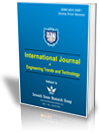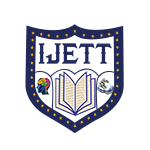The Regeneration of MEG as Recyclable Gas Hydrate Inhibitor: A Mini-Review from Laboratory to Machine Learning
The Regeneration of MEG as Recyclable Gas Hydrate Inhibitor: A Mini-Review from Laboratory to Machine Learning |
||
 |
 |
|
| © 2025 by IJETT Journal | ||
| Volume-73 Issue-3 |
||
| Year of Publication : 2025 | ||
| Author : Mahmood Riyadh Atta, Bhajan Lal, Abdulrab Abdulwahab, Azmi Mohd Shariff, Khor Siak Foo |
||
| DOI : 10.14445/22315381/IJETT-V73I3P110 | ||
How to Cite?
Mahmood Riyadh Atta, Bhajan Lal, Abdulrab Abdulwahab, Azmi Mohd Shariff, Khor Siak Foo, "The Regeneration of MEG as Recyclable Gas Hydrate Inhibitor: A Mini-Review from Laboratory to Machine Learning," International Journal of Engineering Trends and Technology, vol. 73, no. 3, pp. 130-139, 2025. Crossref, https://doi.org/10.14445/22315381/IJETT-V73I3P110
Abstract
This mini-review examines the latest advancements in Monoethylene Glycol (MEG) regeneration technologies, which are pivotal for sustaining efficiency in the oil and gas sector. MEG regeneration, essential for mitigating hydrate formations in subsea pipelines, has evolved significantly from traditional methods, predominantly methanol-based, to more sustainable MEG-based solutions. This paper delves into various experimental setups, from pilot plants to high-pressure reactors, then simulation approaches and machine learning applications, showcasing the nuanced understanding of MEG's behavior and the effectiveness of MEG during the regeneration process. Through a synthesis of recent studies, this review provides insights into the challenges of MEG regeneration, emphasizing the need for continuous innovation and optimization in hydrate management.
Keywords
Flow assurance, Hydrate inhibition, MEG regeneration, MEG reclamation, Review study.
References
[1] A.M. Teixeira, J.L. Medeiros, and O.Q.F. Araújo, “Offshore Monoethylene Glycol Recovery Units: The Importance of Choice of MEG State in the Reference Environment for Effective Exergy Analysis,” Offshore Technology Conference Brasil, Rio de Janeiro, Brazil, 2015.
[CrossRef] [Google Scholar] [Publisher Link]
[2] Hyunsoo Son et al., “Simulation and Modeling of MEG (Monoethylene Glycol) Regeneration for the Estimation of Energy and MEG Losses,” Energy, vol. 157, pp. 10-18, 2018.
[CrossRef] [Google Scholar] [Publisher Link]
[3] C.A. Nazzer, and J. Keogh, “Advances in Glycol Reclamation Technology,” Offshore Technology Conference, Houston, Texas, USA, 2006.
[CrossRef] [Google Scholar] [Publisher Link]
[4] Allan Blackman, and Lawrie Gahan, Aylward and Findlay's SI Chemical Data, 7th ed., John Wiley & Sons, pp. 1-176, 2014.
[Google Scholar] [Publisher Link]
[5] S. Brustad, K.P. Løken, and J.G. Waalmann, “Hydrate Prevention using MEG Instead of MeOH: Impact of Experience from Major Norwegian Developments on Technology Selection for Injection and Recovery of MEG,” Offshore Technology Conference, Houston, Texas, 2005.
[CrossRef] [Google Scholar] [Publisher Link]
[6] Khalid Alef et al., “Evaluation of MEG Reclamation and Natural Gas Hydrate Inhibition during Corrosion Control Switchover,” Journal of Petroleum Science and Engineering, vol. 176, pp. 1175-1186, 2019.
[CrossRef] [Google Scholar] [Publisher Link]
[7] Khalid Alef et al., “The Effect of Regenerated MEG on Hydrate Inhibition Performance Over Multiple Regeneration Cycles,” Fuel, vol. 222, pp. 638-647, 2018.
[CrossRef] [Google Scholar] [Publisher Link]
[8] Maria N. Psarrou et al., “Carbon Dioxide Solubility and Monoethylene Glycol (MEG) Degradation at MEG Reclaiming/Regeneration Conditions,” Journal of Chemical & Engineering Data, vol. 56, no. 12, pp. 4720-4724, 2011.
[CrossRef] [Google Scholar] [Publisher Link]
[9] M.H. Moura-Neto et al., “Simulation and Analysis of MEG Reclamation and Regeneration Unit in Offshore Natural Gas Plants,” Industrial & Engineering Chemistry Research, vol. 62, no. 39, pp. 15974-15985, 2023.
[CrossRef] [Google Scholar] [Publisher Link]
[10] Thomas Michael Latta, Marion Elisabeth Seiersten, and Scott A. Bufton, “Flow Assurance Impacts on Lean/Rich MEG Circuit Chemistry and MEG Regenerator/Reclaimer Design,” Offshore Technology Conference, Houston, Texas, USA, 2013.
[CrossRef] [Google Scholar] [Publisher Link]
[11] Walter J. Rossiter Jr et al., “An Investigation of the Degradation of Aqueous Ethylene Glycol and Propylene Glycol Solutions using ION Chromatography,” Solar Energy Materials, vol. 11, no. 5-6, pp. 455-467, 1985.
[CrossRef] [Google Scholar] [Publisher Link]
[12] Md. Emdadul Haque, “Ethylene Glycol Regeneration Plan: A Systematic Approach to Troubleshoot the Common Problems,” Journal of Chemical Engineering, vol. 27, no. 1, pp. 21-26, 2012.
[CrossRef] [Google Scholar] [Publisher Link]
[13] Asmaa Othman Bashir Mohamed, “Design and Process Economics of a Monoethylene Glycol (MEG) Recovery System from Produced Water,” Master Thesis, Qatar University Digital Hub, 2019.
[Google Scholar] [Publisher Link]
[14] Jérémie Esquier, How to Select Best Meg Recovery Unit's Configuration?, Digital Refining Processing, Operation, and Maintanance, United Kingdom, 2014.
[Google Scholar] [Publisher Link]
[15] A. Yong, and E.O. Obanijesu, “Influence of Natural Gas Production Chemicals on Scale Production in MEG Regeneration Systems,” Chemical Engineering Science, vol. 130, pp. 172-182, 2015.
[CrossRef] [Google Scholar] [Publisher Link]
[16] Suk Lee et al., “Investigation of Hydrate Inhibition System for Shallow Water Gas Field: Experimental Evaluation of KHI and Simulation of MEG Regeneration Process,” Journal of Ocean Engineering and Technology, vol. 34, no. 5, pp. 342-350, 2020.
[CrossRef] [Google Scholar] [Publisher Link]
[17] M.I. Hamidiy et al., “Cleanliness Correlation of Mono Ethylene Glycol (MEG) as Thermodynamic Hydrate Inhibitor to Forecast Fresh Injection Period Using Supervised Machine Learning,” Journal IATMI Indonesian Petroleum Engineering Experts Association, pp. 1-6, 2022.
[Google Scholar] [Publisher Link]
[18] Akram Fadhl Al-mahmodi et al., “Optimization of Synthesis Parameters for Polyamide 610: Strategic Tailoring for Superior Latent Heat Performance,” Surfaces and Interfaces, vol. 51, 2024.
[CrossRef] [Google Scholar] [Publisher Link]
[19] M.I. Hamidiy et al., “Literature Study and Model Example of Machine Learning Application for Plugging Prediction at Hydrate Inhibitor Regeneration System: Study Case,” Abu Dhabi International Petroleum Exhibition and Conference, Abu Dhabi, UAE, 2023.
[CrossRef] [Google Scholar] [Publisher Link]

